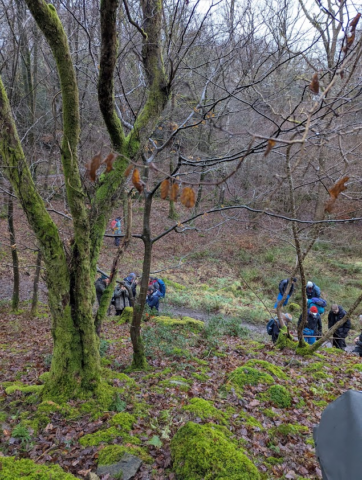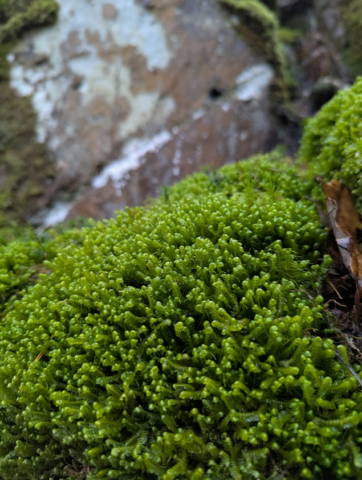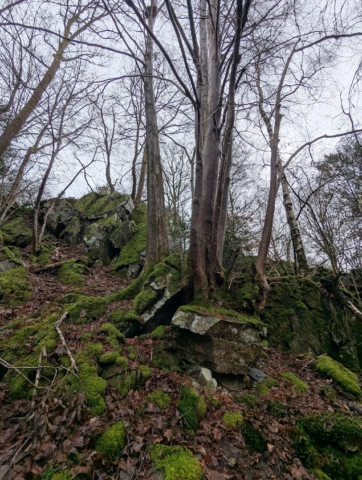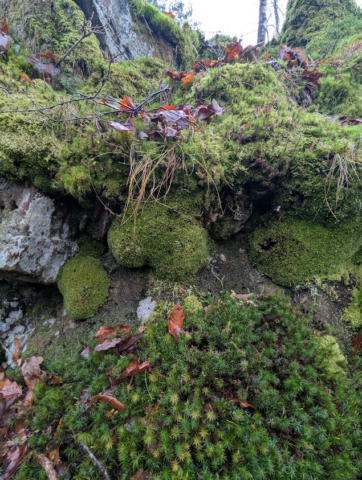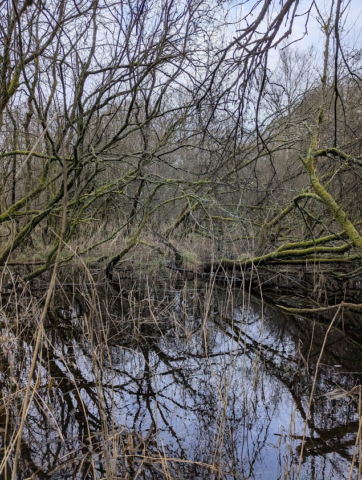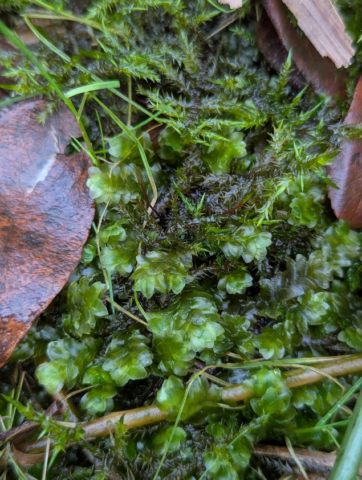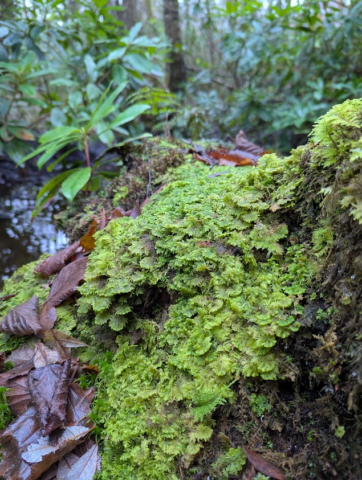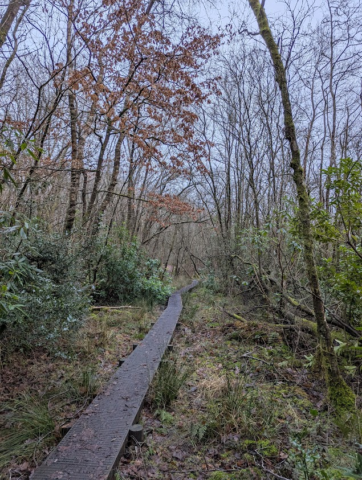Our December meet took place on a drizzly but mild December day at Black Beck Woods, an area of privately owned conservation woodland in the south lakes near Bouth (previously owned by the ‘Booth’ family in fact!). Due to the size of the site, we initially met just off the A590 to then travel in fewer vehicles along the smaller roads and access tracks to the starting location. We saw a record-breaking number of group members attend, meaning Kerry had the tricky logistical job of herding 20+ bryologists and lichenologists into cars so that we could get started in a timely fashion.
Black Beck woods is owned by Edward Mills, a woodland manager with a keen interest in using practical conservation and restoration methods to create a high-quality woodland in the temperate rainforest zone. Ed gave us a great introduction to the site and provided a plan for the day so that the group could prioritise visits to the most interesting parts of the woodland.
This was a rare occasion where the bryophyte and lichen groups stayed within view for much of the day, ambling up the woody slope from the access path to find our respective treasures. While Paul gave a beginner’s group an invaluable introduction to common acid species such as Pseudoscleropodium purum and Polytrichum formosum, others set out in hopeful anticipation of the oceanic indicator species found in many similar sites in the area. To our joy, we were able to quickly locate sizable patches of Bazzania trilobata alongside regular findings of associates Plagiochila spinulosa and Saccogyna viticulosa, all great indicators of healthier oceanic woodland.
We headed through the woodland to a locally known ravine called ‘Scholar’s Gap’, a perfect damp, shaded rocky habitat for humid-loving species with locally rare Tilia cordata (Small Leaved Lime) growing from the crags. Here we discovered many of the same oceanic indicators (a good sign of a consistently high-quality site), as well as some wonderful hummocks of Leucobryum glaucum poking out between the rocks. The find of the morning, however, was of course Andy’s delightful discovery of Syzygiella autumnalis (previously known as Jamesoniella autumnalis) on a shaded rockface right at the bottom of the ravine slope.
We were able to meet up with the Lichen group for lunch, enjoying a chat about morning finds along the banks of the Rusland Pool at the southeastern side of the site. The afternoon saw us exploring a willow carr at the south end of the site, just off the public footpath at Fish House Bridge. Although we were still close to the craggy acid woodland from the morning, this wet woodland habitat provides very different conditions for new species discoveries. The flushing of water brings in a more base-rich influence, meaning common indicator species such as Calliergonella cuspidata and Sphagnum auriculatum started to appear. There were also many epiphytes within ID availability on the sprawling willows, and those with wellies were able to access species such as Frullania tamarsicum, Bryoerythrophyllum recurvirostrum, and Neckera crispa. Between the trees on the boggy woodland floor, Sue’s keen eyes spotted the shiny leaves of Hookeria lucens, a lovely flat-leaved moss that impersonates a liverwort at first glance.
The site sports a well-maintained boardwalk to host the public right of way, allowing us good access to the more inundated areas and perfect habitat for Trichocolea tomentella, the wonderfully named ‘Handsome Woollywort’ that was growing in abundant tussocks in perfect view. These wet areas were also great for Sphagnum, and our finalcount totalled at eight,which shows great diversity at the site.
While the day was already overflowing with species, there was one habitat we were yet to explore: deadwood! Luckily for us, there were conveniently placed logs all along the boardwalk that finally allowed us to tick off some classic deadwood species such as Odontoschisma denudatum, Cephalozia lunulifolia and Lophozia ventricosa.
Overall, the site turned out to be full of surprises, and although it currently has no SSSI designation there is hope that recording such as ours can start to create a better picture of the quality of the site in the future. Thanks to everyone that attended and to Kerry and Ed for organising the day. See you in January and happy holidays to all those who celebrate!
Text: Josie Niemira
Photos: various

